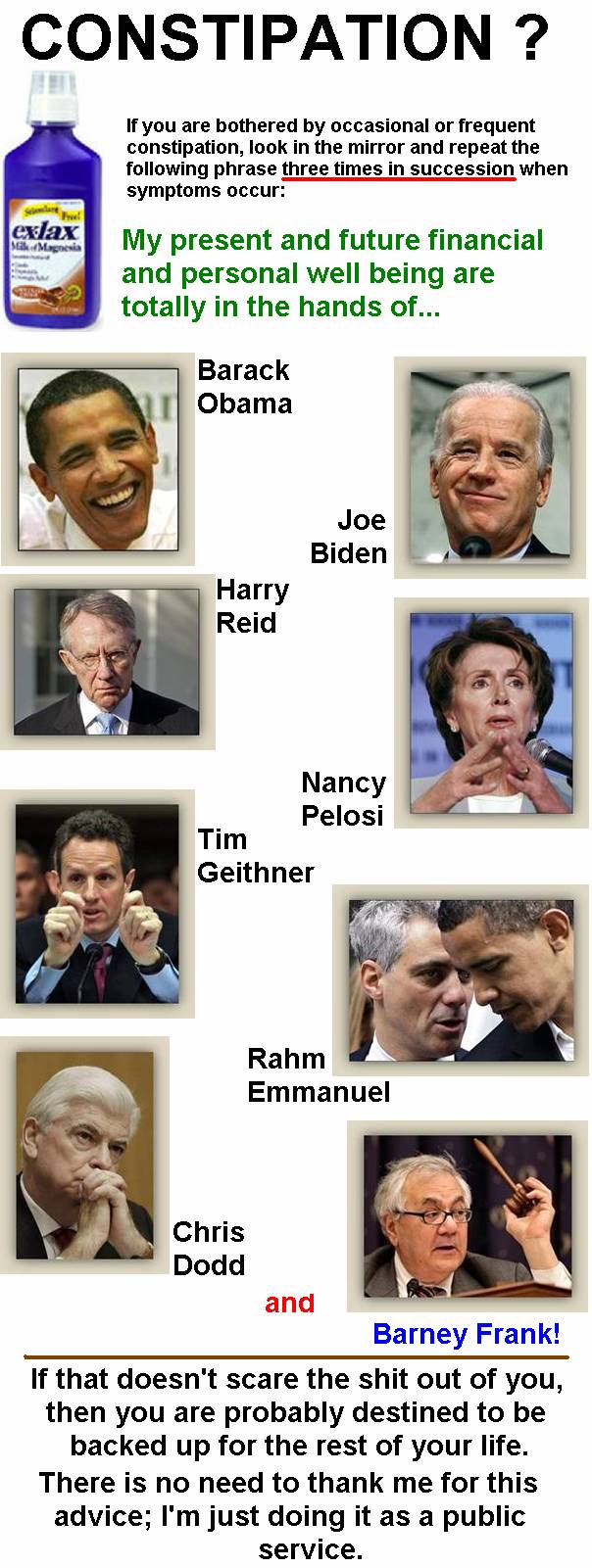That about sums up the one an only truism about taxation. That politicians become drunk with power once they have the ‘tax hammer’ in their hot little hand is another. But that is more of a moral issue than an economic one. I came across this publication from the U.S. Treasury called The History of the U.S. Tax System. It’s something that Treasury Secretary Timothy Geithner should read. As Congress and the Obama administration seem to be on a mad dash to tax us into prosperity and borrow our way out of debt, this piece from the Treasury Dept. should be required reading.
Lower marginal tax rates were ‘essential to a strong economy.’ Meddling with the system with that ‘tax hammer’ can make it worse.
The economic boom following the 1982 recession convinced many political leaders of both parties that lower marginal tax rates were essential to a strong economy, while the constant changing of the law instilled in policy makers an appreciation for the complexity of the tax system. Further, the debates during this period led to a general understanding of the distortions imposed on the economy, and the lost jobs and wages, arising from the many peculiarities in the definition of the tax base.
History demonstrates, whether you want to learn from it or not, that taxing business excessively, ‘over-reaching,’ leads to collapse.
The 1986 Tax Reform Act was roughly revenue neutral, that is, it was not intended to raise or lower taxes, but it shifted some of the tax burden from individuals to businesses. Much of the increase in the tax on business was the result of an increase in the tax on business capital formation. It achieved some simplifications for individuals through the elimination of such things as income averaging, the deduction for consumer interest, and the deduction for state and local sales taxes. But in many respects the Act greatly added to the complexity of business taxation, especially in the area of international taxation. Some of the over-reaching provisions of the Act also led to a downturn in the real estate markets which played a significant role in the subsequent collapse of the Savings and Loan industry.
The power trip, aka tax hammer, became addictive for the politicos. It never occurred to them to quit increasing government spending. Only how and where and what to raise taxes on.
Between 1986 and 1990 the Federal tax burden rose as a share of GDP from 17.5 to 18 percent. Despite this increase in the overall tax burden, persistent budget deficits due to even higher levels of government spending created near constant pressure to increase taxes. Thus, in 1990 the Congress enacted a significant tax increase featuring an increase in the top tax rate to 31 percent. Shortly after his election, President Clinton insisted on and the Congress enacted a second major tax increase in 1993 in which the top tax rate was raised to 36 percent and a 10 percent surcharge was added, leaving the effective top tax rate at 39.6 percent. Clearly, the trend toward lower marginal tax rates had been reversed, but, as it turns out, only temporarily.
The tax code becomes a vehicle for spending programs. Wielding the tax hammer for social engineering increases public debt. Lesson not learned here is that money doesn’t grow on trees and, stop increasing the spending. But it’s OK if you can use the tax code to buy votes. What? This is where the class envy/class warfare tactic, as connected to the tax code, was taken to a higher level.
The Taxpayer Relief Act of 1997 made additional changes to the tax code providing a modest tax cut. The centerpiece of the 1997 Act was a significant new tax benefit to certain families with children through the Per Child Tax credit. The truly significant feature of this tax relief, however, was that the credit was refundable for many lower-income families. That is, in many cases the family paid a “negative” income tax, or received a credit in excess of their pre-credit tax liability. Though the tax system had provided for individual tax credits before, such as the Earned Income Tax credit, the Per Child Tax credit began a new trend in federal tax policy. Previously tax relief was generally given in the form of lower tax rates or increased deductions or exemptions. The 1997 Act really launched the modern proliferation of individual tax credits and especially refundable credits that are in essence spending programs operating through the tax system.
“There’s no difference at all in terms of the effects on the federal deficit,” says Roberton Williams of the Tax Policy Center. “It’s perfectly equivalent. It’s just easier to say, ‘I cut your taxes’ as opposed to ‘I created a new federal program to send money to people.'”
Reducing taxes helped, not hurt, economic recovery.
The 2001 tax cut will provide additional strength to the economy in the coming years as more and more of its provisions are phased in, and indeed one argument for its enactment had always been as a form of insurance against an economic downturn. However, unbeknownst to the Bush Administration and the Congress, the economy was already in a downturn as the Act was being debated. Thankfully, the downturn was brief and shallow, but it is already clear that the tax cuts that were enacted and went into effect in 2001 played a significant role in supporting the economy, shortening the duration of the downturn, and preparing the economy for a robust recovery.
One can only hope that the next generation of political leaders will have learned something from the past and not repeat that which has failed before. Here’s hoping that the next chapter in The History of the U.S. Tax System describes unprecedented economic recovery after abolishing the current income-based tax system and going to the consumption-based tax system called the FairTax.
Links: History of the U.S. Tax System | The Income Tax System Is Broken
![]()





